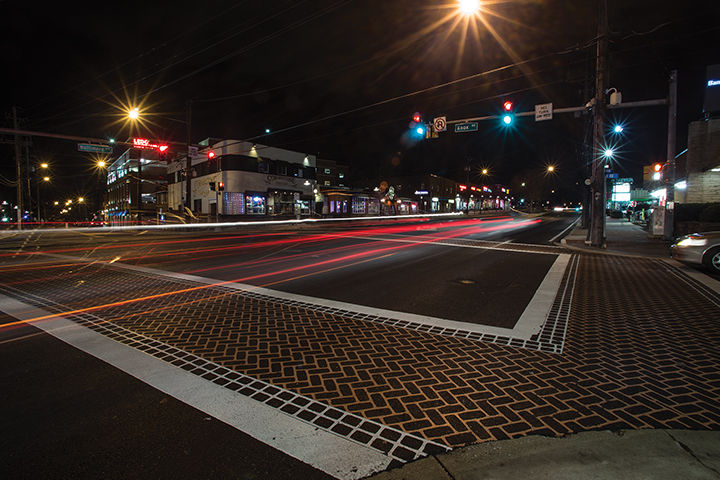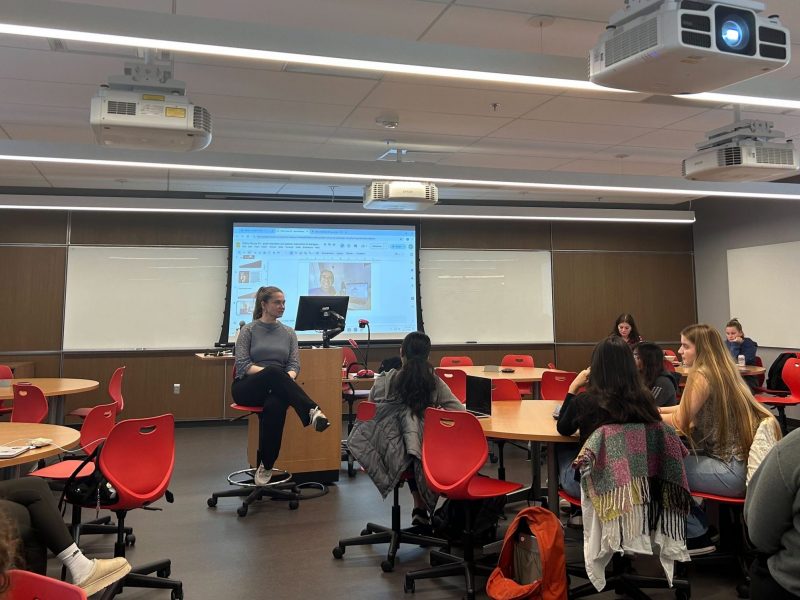
During an Aug. 5 College Park City Council work session, the State Highway Administration introduced an updated plan for Route 1 construction that includes consolidating roadway access points, keeping power lines aboveground and increasing landscaping.
The SHA is researching and meeting with businesses that have more than one access point to the thoroughfare to combine or eliminate those entryways, which Denila Deliallisi, SHA’s Route 1 project manager, said will cut down on conflicts between local and through traffic.
Despite previous discussions between the SHA and the city about relocating existing utilities underground, Deliallisi said the administration is progressing with an aboveground utilities design.
“To date, funding for undergrounding has not become available, and therefore SHA is moving forward,” Deliallisi said at the meeting. “If in the near future there are sources of funding that do become available, then SHA will coordinate with the city to access what the impacts to the schedule and budget will be.”
The updated design also includes planting trees in the proposed 5- to 6-foot grass buffer areas separating sidewalks from the road. Trees will not be planted in the buffers facing the Memorial Chapel, however, due to a request from this university to “maintain the pastoral look,” Deliallisi said.
For the five-lane stretch of Route 1 where property lines extend up to the sidewalk and buffer areas can’t be built, trees will be planted in proposed 14-foot-wide medians that will replace two-way turning lanes.
The revamped construction plans are part of a project aimed at improving the ease of travel and visual appeal of Route 1 along the College Park corridor. The project has three segments, with the first spanning 1.4 miles from College Avenue to Route 193. The other two segments, which will extend construction to the Capital Beltway, remain in the planning stages.
“The design effort has been underway for a while but still has a way to go, just because things are being fine-tuned,” said Terry Schum, the city’s planning director.
In particular, councilmembers expressed concerns at the meeting about biker safety and the SHA imposing eminent domain on local businesses. District 2 Councilman P.J. Brennan and District 1 Councilman Patrick Wojahn, for example, pushed for more separation between car and bike lanes, such as rumble strips, and District 4 Councilwoman Denise Mitchell said she had raised an eyebrow at the administration possibly taking away a Route 1 tuxedo shop.
“The struggle now is just that: how to fit everything we want in the project — wide bike lanes, wide sidewalks and landscaping — without drastically impacting the businesses that are there,” Schum said. “The good news is that this project has now been funded for construction.”
The project’s additional improvements will include pavement resurfacing, landscaping, drainage systems, stormwater management, signage and pavement markings, and intersection lighting. All sidewalks, pedestrian ramps, driveway entrances and bicycle facilities will also be compliant with the Americans with Disabilities Act, according to the SHA.
“We can do better on Baltimore Avenue,” Mayor Andy Fellows said. “The mission is to develop a complete street that is as beautiful as possible and also really accommodates both for growth, but also for visitors … [and] existing businesses.”
The project received federal approval in 2005. In late June, Gov. Larry Hogan announced the allocation of nearly $2 billion for state transportation initiatives, $30 million of which will fund the first segment of Route 1 construction.
That money will be available starting next year, Schum said.
The SHA has a financial advertisement date — the time at which the design is complete and contractors bid to take on the project — of June 2018, and a groundbreaking date of about October 2018, Deliallisi said.



